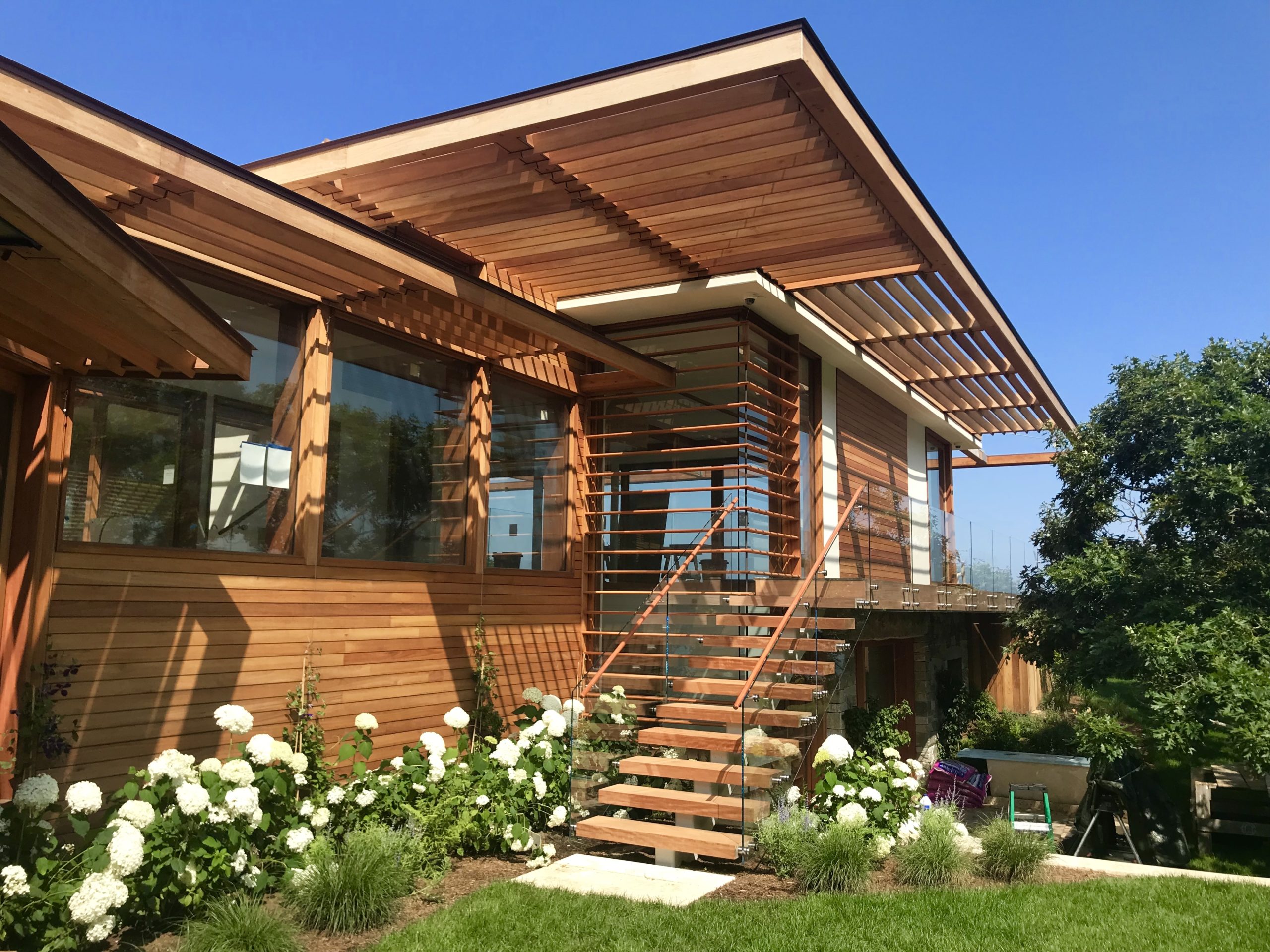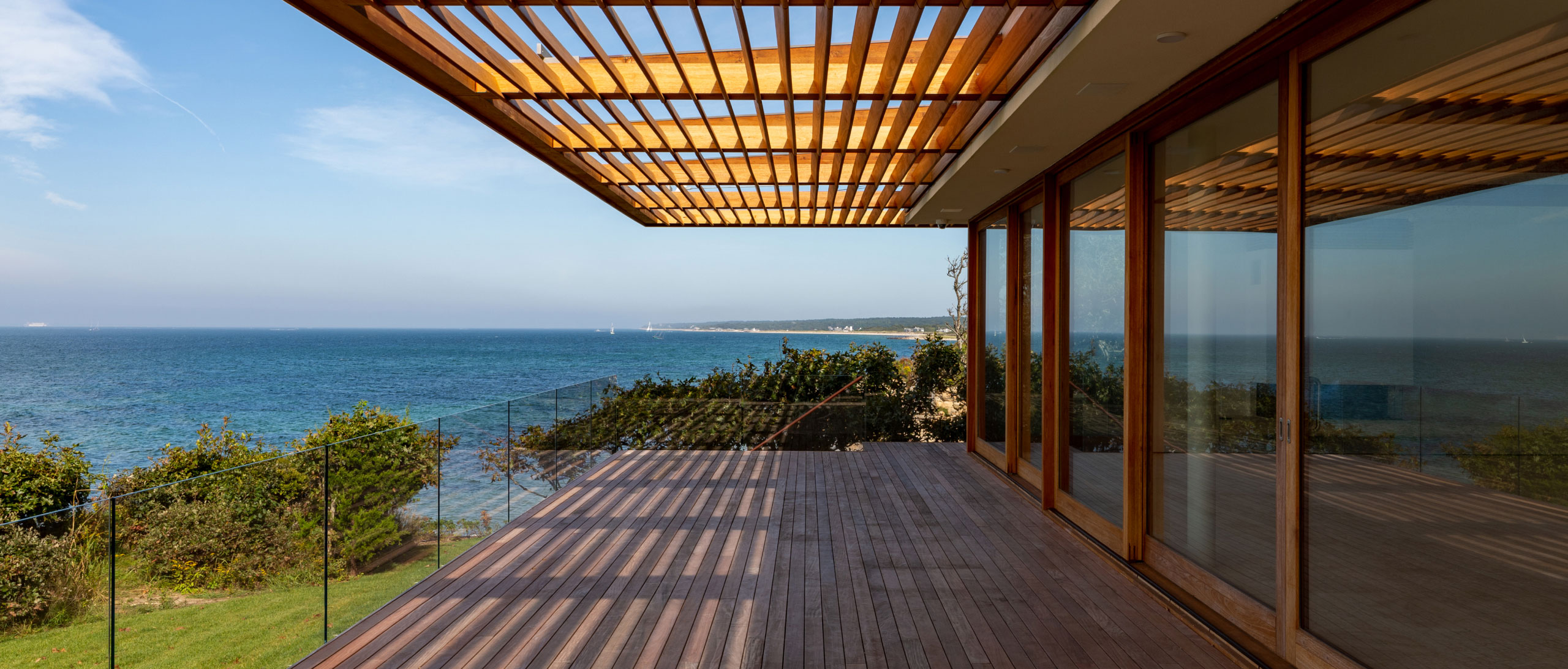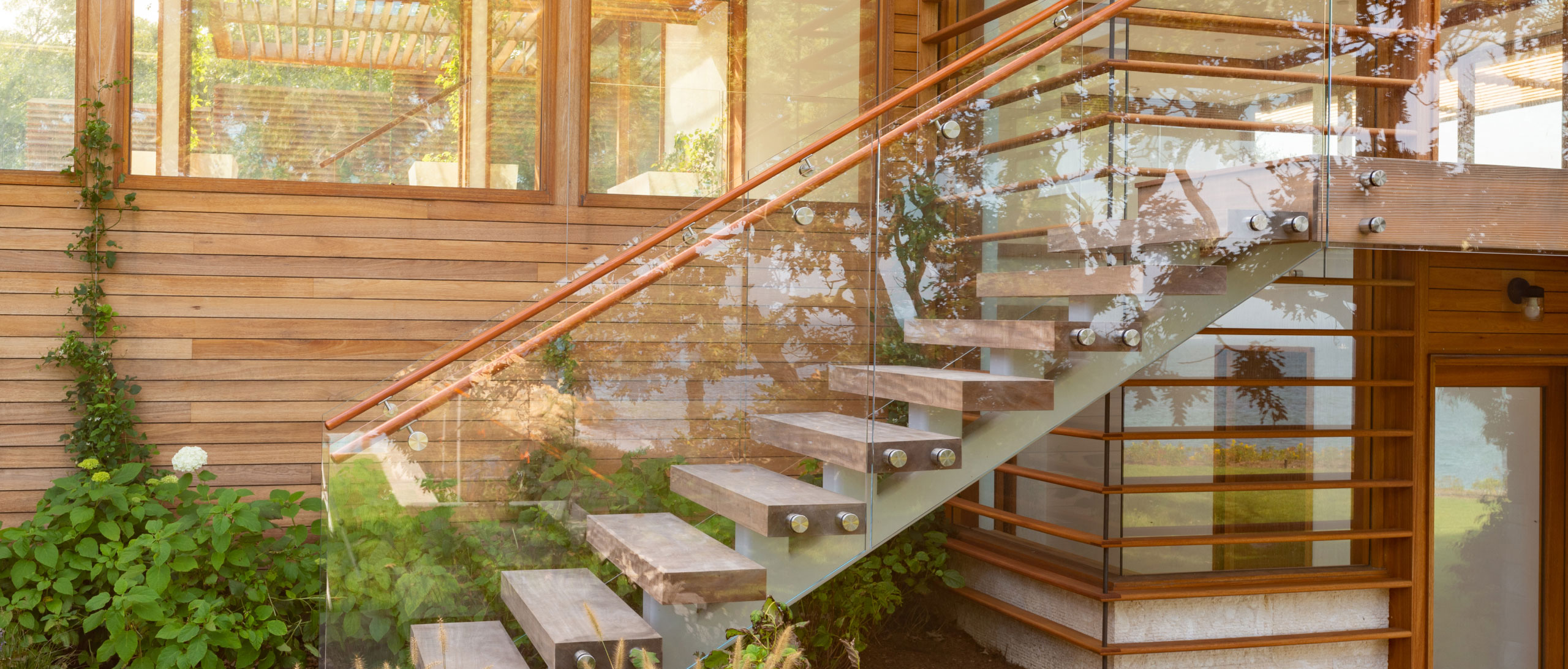
Biophilic Design
At Tate Builders, we work closely with clients and nature to create one-of-a-kind homes that celebrate the glorious beauty of Martha’s Vineyard and nurture the lives of owners and their guests. Biophilic Design elements and details is the single best guide to our team as we reach to exceed our clients hopes and expectations.
People are emotionally and biologically connected to nature. Almost the entire history of human evolution happened in response to the natural world. Buildings and cities are relatively new and, when designed without connection to nature, can be physically and emotionally debilitating. Connection to nature is fundamental for our health, fitness and well being.
Designing homes and environments that are in harmony with, and harness the power of, nature is called biophilic design. Over the past decades, Tate Builders designed homes have become more and more influenced by the principles of biophilic design to the point where each design decision we make is now made in response to the principles of Biophilic Design.

What is biophilic design?
Biophilic design is the intentional pursuit of nature in all aspects of design. In successful biophilic design, all elements exist in harmony and the whole is greater than the sum of its parts. The result is an environment that contributes to its inhabitants’ health and well-being. A home that fosters good health, encourages clarity, nurtures relationships and brings joy.
Biophilic design connects occupants to nature through direct and indirect interventions contained in 14 patterns or principles. The patterns are defined as:
Nature in the space
- Visual connection with nature
- Non-visual connection with nature (auditory, haptic, olfactory)
- Non-rhythmic sensory stimuli (the use of natural sensory stimuli that attract attention, allowing individuals’ capacity for focused tasks to be replenished from mental fatigue and physiological stressors)
- Thermal and airflow variability
- Presence of water
- Dynamic and diffuse light
- Connection with natural systems (spaces that evokes a relationship to a greater whole, making one aware of seasons and the cycles of life)
Natural patterns
- Biomorphic forms and patterns (symbolic references to natural elements, patterns, textures, etc.)
- Material connection with nature (use of natural materials)
- Complexity and order (a balance between simple and complicated forms)
- Prospect (open and freeing while imparting a sense of safety and control, particularly when alone or in unfamiliar environments)
- Refuge (a place for withdrawal from environmental conditions or the main flow of activity, spaces where individuals are protected from behind and overhead)
- Mystery (the promise of more, achieved through partially obscured views or other sensory devices that entice the individual to travel deeper into the environment)
- Risk/Peril (a sense that a space is intriguing, worth exploring, irresistible and possibly even dangerous)

The origin of the term biophilia
American biologist, theorist, naturalist and author Edward O Wilson from Harvard University popularized the term Biophilia in the 1980s when he observed how increasing rates of urbanism were leading to a disconnect with the natural world.
Bio means “live or living things,” philia means “love.” Biophilia is the “love of life and living systems.”
Wilson’s book about the subject is titled Biophilia and remains in publication.


Resources for learning more about biophilic design
14 Patterns of Biophilic Design from Terrapin Bright Green
What is and is not Biophilic Design from Metropolis Magazine